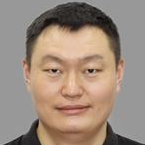Investigations and Applications in Advanced Materials Processing
A special issue of Coatings (ISSN 2079-6412). This special issue belongs to the section "Ceramic Coatings and Engineering Technology".
Deadline for manuscript submissions: closed (10 December 2023) | Viewed by 14875
Special Issue Editors
Interests: surface engineering; advanced manufacturing; modelling; biomanufacturing; surface integrity; corrosion; biomaterials
Special Issues, Collections and Topics in MDPI journals
Interests: micro/nano surface machining on semiconductor and ceramic materials; wear investigations on polished surfaces; mechanical property post-testing on ceramic substrates; AI aided parameter optimization in precision manufacturing
Special Issues, Collections and Topics in MDPI journals
Interests: abrasive water/air jet machining of multi-scale structures on engineering materials; novel abrasive flow machining technologies with assistance of hybrid multi-energy fields; exploring materials response to the abrasive flow machining process for the underlying science, such as tribology, fractures, mechanics, etc., using FEM and DEM; numerical modelling of abrasive flow machining process by using CFD-DEM coupling method; materials removal mechanisms, surface formation mechanisms and surface integrity related to the advanced machining technology
Special Issue Information
Dear Colleagues,
In recent decades, structural materials have been widely used in modern industries, such as building sites, surface engineering, and bio-materials applications. Therefore, high-precision materials handling becomes prominent in crucial engineering facets, e.g., the prolonged wear life of mining tools, damage free silicon wafers, and artificial implants. Then, to obtain a deep and comprehensive insight into such mechanisms and material behaviours, property investigations and applications are of key challenge to improve industrial facilitations.
Material processing problems are encountered in a myriad of experimental analyses and testing situations. For instance, the statistical analyses of mining chips and cutting forces provide an efficient prediction for specific energy and wear conditions of mining picks, setting up a quantitative understanding of such rock mechanisms. In polishing the silicon wafer, damage free surfaces and high polishing efficiency are necessary for the post-processing stage. Deep analyses of the mechanism, with all the vital parameters involved in the polishing process, would be a practical identification guidance, helping engineers optimize the machining process. Especially, for polysaccharide-rich plant biomass, large-scale data analysis and ‘omics’-based strategies could be used for the enzyme prediction to improve the feedstock productivity for biofuel, chemicals, and biomaterials in bioenergy crops. Hence, property investigations could be exploited to explore the nature of such material mechanisms. Mathematical methods can be exploited, such as gradient-based optimization, machine learning, deep learning, multiscale analysis, image processing, etc., can also be applied in such material research.
The Special Issue focuses on a collection of original and review articles relating to recent materials research, and handles processing problems in ceramics, rock, and biomaterials fields. Ingenious and initiative applications of such problems in industries are also welcome.
Potential topics include but are not limited to the following:
- Technical analysis in rock engineering;
- Mechanism analyses of brittle fracture for ceramics;
- Parameter prediction and optimization of materials handling with machine learning;
- Surface modifications of advanced materials and their optimization;
- Post-processing and characterization of additively manufactured metal parts;
- Abrasive water/air jet machining of multi-scale structures on engineering materials;
- Bio-manufacturing;
- Novel abrasive flow machining technologies with hybrid multi-energy fields;
- Exploring materials response to the abrasive flow machining process;
- Numerical modelling of abrasive flow machining process by using CFD-DEM coupling method;
- Materials removal mechanisms, surface formation mechanisms and surface integrity related to the advanced machining technology;
Dr. Mohammad Uddin
Prof. Dr. Qingyu Yao
Dr. Huan Qi
Guest Editors
Manuscript Submission Information
Manuscripts should be submitted online at www.mdpi.com by registering and logging in to this website. Once you are registered, click here to go to the submission form. Manuscripts can be submitted until the deadline. All submissions that pass pre-check are peer-reviewed. Accepted papers will be published continuously in the journal (as soon as accepted) and will be listed together on the special issue website. Research articles, review articles as well as short communications are invited. For planned papers, a title and short abstract (about 100 words) can be sent to the Editorial Office for announcement on this website.
Submitted manuscripts should not have been published previously, nor be under consideration for publication elsewhere (except conference proceedings papers). All manuscripts are thoroughly refereed through a single-blind peer-review process. A guide for authors and other relevant information for submission of manuscripts is available on the Instructions for Authors page. Coatings is an international peer-reviewed open access monthly journal published by MDPI.
Please visit the Instructions for Authors page before submitting a manuscript. The Article Processing Charge (APC) for publication in this open access journal is 2600 CHF (Swiss Francs). Submitted papers should be well formatted and use good English. Authors may use MDPI's English editing service prior to publication or during author revisions.
Keywords
- materials handling
- surface engineering
- bio engineering
- machining
- applications







